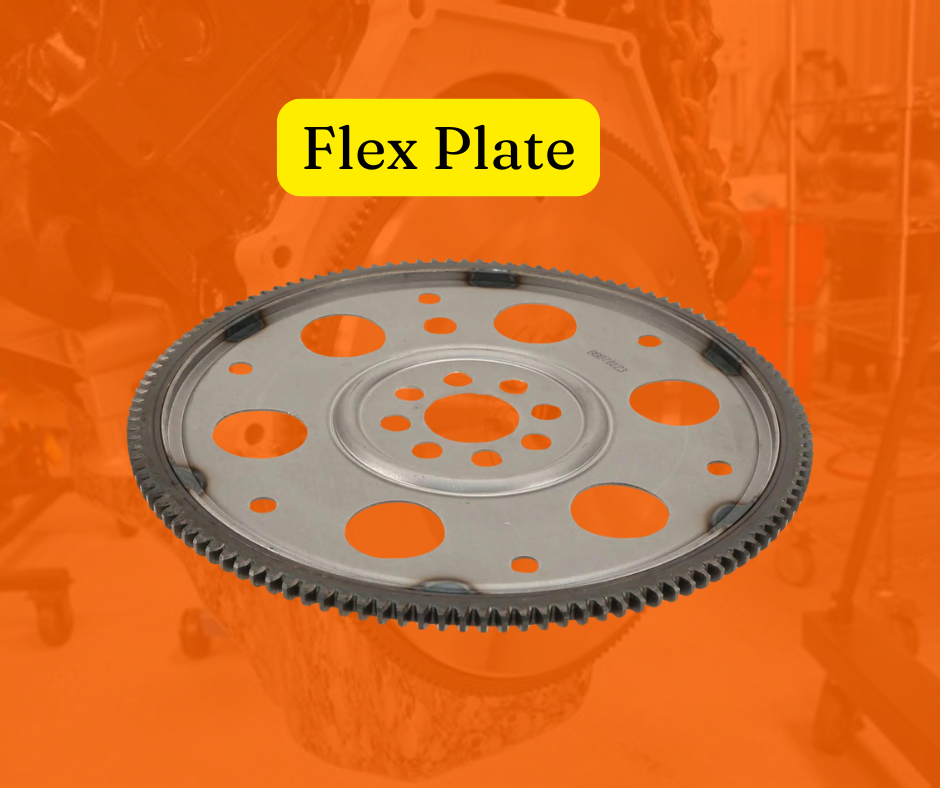Signs of Flex Plate Damage You Shouldn't Ignore

Discover the critical signs of flex plate damage that could save your vehicle from costly repairs.
Understanding the Role of the Flex Plate in Your Vehicle
The flex plate is a crucial component in vehicles equipped with automatic transmissions. It serves as a connection between the engine and the transmission, transferring power from the engine to the transmission and ultimately to the wheels. This thin, metal disc is designed to handle the rotational forces and torque produced by the engine while providing some level of flexibility to absorb and dampen vibrations.
In essence, the flex plate helps ensure smooth power delivery and operation of your vehicle. Without a properly functioning flex plate, your vehicle may experience a range of issues, from minor vibrations to complete transmission failure. Understanding its role can help you better recognize when something is amiss.
Common Symptoms of Flex Plate Failure
Flex plate damage can manifest in several ways, and being aware of these symptoms can help you address issues before they lead to more significant problems. Common signs include:
- Unusual noises: A cracked or damaged flex plate may produce a knocking or clunking noise, especially when the vehicle is idling or in gear.
- Vibrations: Excessive vibrations felt through the vehicle, particularly when accelerating, can indicate a problem with the flex plate.
- Difficulty shifting gears: If you notice that your vehicle has trouble shifting gears or experiences delays when shifting, it could be due to a damaged flex plate.
- Engine misfires: In some cases, a damaged flex plate can cause engine misfires, leading to poor performance and reduced fuel efficiency.
How to Diagnose Flex Plate Issues Accurately
Diagnosing flex plate issues accurately requires a combination of visual inspection and listening for specific symptoms. Here are some steps to help you diagnose potential problems:
- Listen for noises: Pay attention to any unusual sounds coming from the transmission area, particularly when the vehicle is idling or in gear.
- Inspect for cracks: Visually inspect the flex plate for any visible cracks or damage. This may require removing some components to gain access.
- Check for loose bolts: Ensure that all bolts connecting the flex plate to the crankshaft and torque converter are tight and secure.
- Use diagnostic tools: In some cases, using diagnostic tools such as a stethoscope or a scan tool can help pinpoint issues related to the flex plate.
Preventative Measures to Avoid Flex Plate Damage
Preventing flex plate damage involves regular maintenance and paying attention to your vehicle's performance. Here are some preventative measures to consider:
- Regular inspections: Have your vehicle inspected regularly by a qualified mechanic to catch any potential issues early.
- Maintain proper fluid levels: Ensure that your transmission fluid is at the correct level and is changed according to the manufacturer's recommendations.
- Avoid aggressive driving: Aggressive driving, such as rapid acceleration and hard braking, can place additional stress on the flex plate and other components.
- Address issues promptly: If you notice any unusual symptoms, such as noises or vibrations, have your vehicle checked by a professional as soon as possible.
What to Do If You Suspect Flex Plate Damage
If you suspect that your flex plate is damaged, it is crucial to take immediate action to prevent further damage to your vehicle. Here are the steps you should follow:
- Stop driving: If you notice severe symptoms such as loud knocking noises or significant vibrations, stop driving your vehicle to avoid causing more damage.
- Consult a mechanic: Contact a qualified mechanic to inspect your vehicle and diagnose the issue. They will be able to determine if the flex plate is indeed the problem and recommend the necessary repairs.
- Follow repair recommendations: If the flex plate needs to be replaced, follow the mechanic's recommendations for repair or replacement. This may involve removing the transmission to access the flex plate.
- Monitor after repairs: After the repairs are completed, monitor your vehicle's performance to ensure that the issue has been resolved and there are no ongoing problems.

 Loading..
Loading..